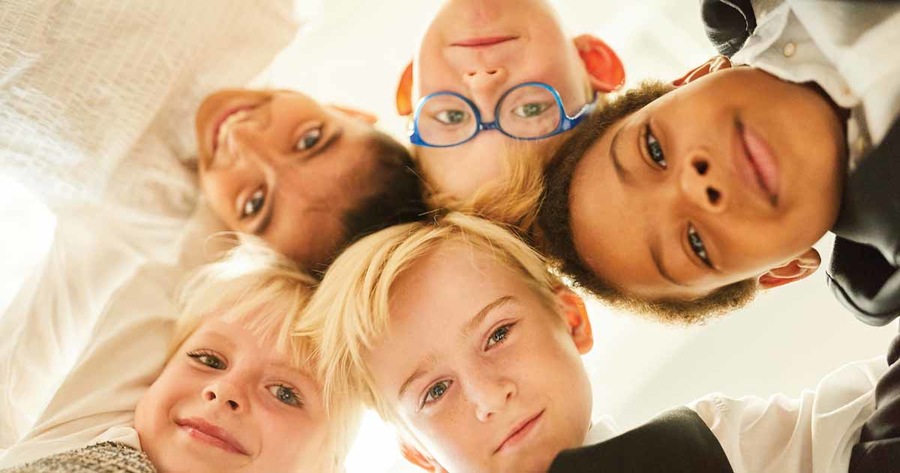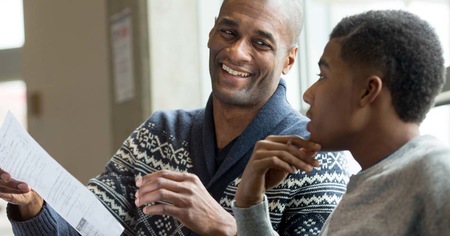With more children and teens being identified with emotional, behavioral, and social relationship needs, our afterschool programs have an opportunity to provide support and build connections among youth.
Yet afterschool program leaders report facing challenges to including children with disabilities in their programs. While as a society we are moving toward more diverse environments, we are still struggling to move away from a system built to serve children with disabilities in separate settings. If organizations do not shift the design of their programs, children's needs will not be met.
Kids Included Together (KIT) helps organizations to meaningfully include kids with disabilities in their programs. We're leading the field in disability inclusion and behavior support through work with over 500 organizations in 48 states and 13 countries.
Using recent KIT data from 625 training sessions, 100 online courses, 325 onsite visits, and 1,752 inclusion coaching calls, plus peer-reviewed research and media stories from 2016-2017, we have identified the top five trends in childhood disability inclusion. We can leverage these trends when assessing our afterschool youth programs, to help create more inclusive programs.
Trend #1: Inclusion as an Umbrella Term
The word "inclusion" has broadened significantly since it was first used to talk about children with disabilities in schools. Inclusion now captures the ever-expanding idea of what human diversity means for our time. Inclusion is not just about disability—it's about gender and gender identity, race, ethnicity, religion, culture, language, sexual orientation, and even country of origin and immigration. In this broader definition, we often find that disability inclusion can be forgotten.
Reflection question: How can we ensure that we include disability as a part of the larger diversity, equity and inclusion conversation?
Trend #2: Intersectionality
Intersectionality is a way to acknowledge how disability intersects with other identity lenses, such as a person's race, gender identity or sexual orientation.
The disability-race intersection brings up questions of disproportionate representation in special education and school discipline outcomes.
As intersectionality has become part of the mainstream conversation, it's important to spend time thinking through the complexities of how identities interact and impact children and youth.
Reflection question: Are there differences in how children experience our program based on race, gender, sexual orientation or disability?
Trend #3: Reducing Expulsion Among Rising Behavior Issues
State early education and care systems are calling for significant limitations on suspension and expulsion in licensed childcare programs.
While these policy changes are positive and desperately needed, they come at a time when programs are seeing an increase in the number of children with concerning and at times unsafe behavior. High levels of challenging behavior contribute to staff stress levels and the need for additional professional development.
Reflection question: What can we do to rise to the challenge of supporting children with increasingly complex needs in our afterschool programs?
Trend #4: Emphasis on Social-Emotional Learning
As young people enter post-secondary education and workforce environments, they are often ill-prepared to manage their emotions, feel and show empathy, and establish positive relationships. Workforce leaders report deficiencies in new entrants' applied skills, such as demonstrating personal accountability, teamwork and time management.
This trend points to the importance of building foundational social-emotional learning and resiliency assets. Planning for child and youth development in your program means planning how to promote social-emotional learning.
Reflection question: Do we have a coordinated approach to social-emotional learning?
Trend #5: Special Needs Is a Euphemism
The term "special needs" is well-intended and often used by parents of children with disabilities. It is also widely viewed by the disability community as patronizing, offensive and stigmatizing.
Many disability rights groups are calling for us to use the words they identify with, rather than words that reinforce stigma. Keep perspective in mind as you think through the terms you use and how different people may experience them.
Reflection questions: What does "special needs" mean to our staff? Are there other euphemisms in our program worth exploring?
While our society has come a long way in improving the inclusivity of education and afterschool programs, we still have a long way to go. Understanding these trends can help you and your team assess your afterschool program. Commit to ongoing reflection and be willing to have deep conversations about what you can glean from the top trends in disability inclusion. See the full report and research at KIT.org/trends.
Written by Alissa Marotto, MS, Research & Evaluation Director, Kids Included Together. For more information on KIT and disability inclusions resources, visit KIT.org.
This article originally appeared in AfterSchool Today.




